
The Mohammed Bin Rashid School for Communication (MBRSC) graduates talented, proficient, and dedicated young media professionals. The American University in Dubai first offered the Bachelor of Communication and Information Studies (BCIS) degree in the fall of 2007. The current program has taken effect at the beginning of AY 2009-2010. The MBRSC launched in fall 2017, the Master of Arts in Leadership and Innovation in Contemporary Media. Mr. Ali Jaber has been the dean of the school ever since September 2009.
The MBRSC undergraduate students may join the Digital Production and Storytelling (DPST) or the Journalism (JOUR) major, both of which begin at the freshman level with fundamental concepts, theories, and media ethics and culminate in a capstone project and an internship at a reputable media firm in the UAE. The DPST and JOUR majors offer Arabic track options allowing the students to take all their writing courses in Arabic.
The total enrollment at the MBRSC as of fall 2021 is 123 undergraduate students (see Table 1). The total number of the MBRSC undergraduate students for the last four academic years has averaged 148 students. We can observe a positive yield in Fall 2022, which the school expects to continue to increase over the next academic years.
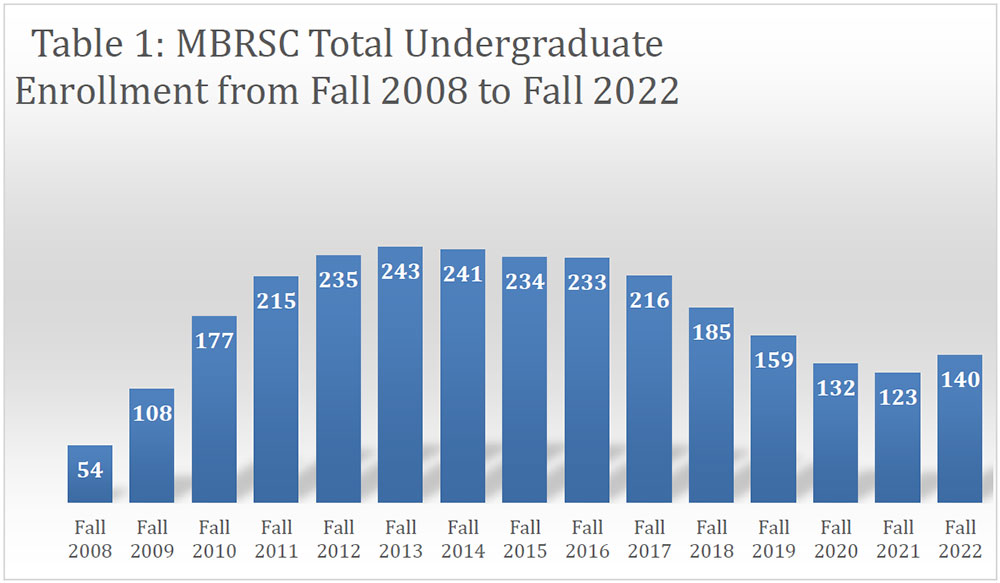
The freshmen are consistently the largest number of undergraduate students in the MBRSC (see Table 2). This figure though may be inflated because some students take more than one academic year to move to the sophomore status since they have to complete remedial English and/or math courses that are non-credited. On the other hand, the largest attrition rate happens at the end of the freshman year, which may justify the uneven distribution of students by grade level.
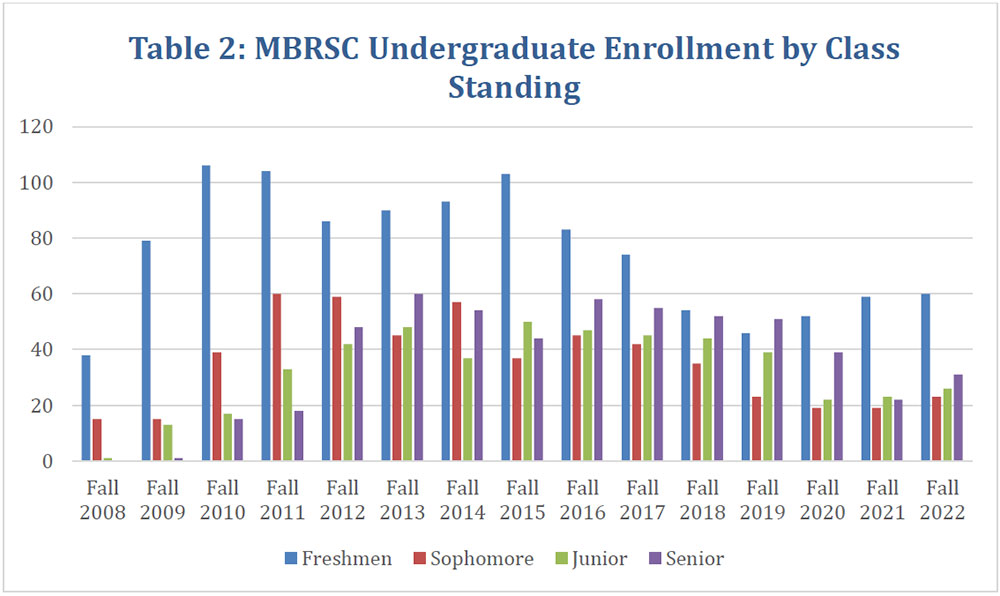
The MBRSC provides yearly around 12 up to 20 merit-based scholarships, sponsored by the Dubai Media Council (DMC). The undergraduate scholarships are for students joining the Journalism or the Digital Production and Storytelling majors. This ensures that each MBRSC classroom will have a high concentration of intellectually engaged and high performing students, that is also ethnically and socioeconomically diverse. As of Spring 2023, the proportion of the MBRSC undergraduate students who have the DMC scholarship is around 47%.
In the recent academic year, in the DPST major, the proportion of English and Arabic track students is almost equal in terms of total numbers. (see Table 3).
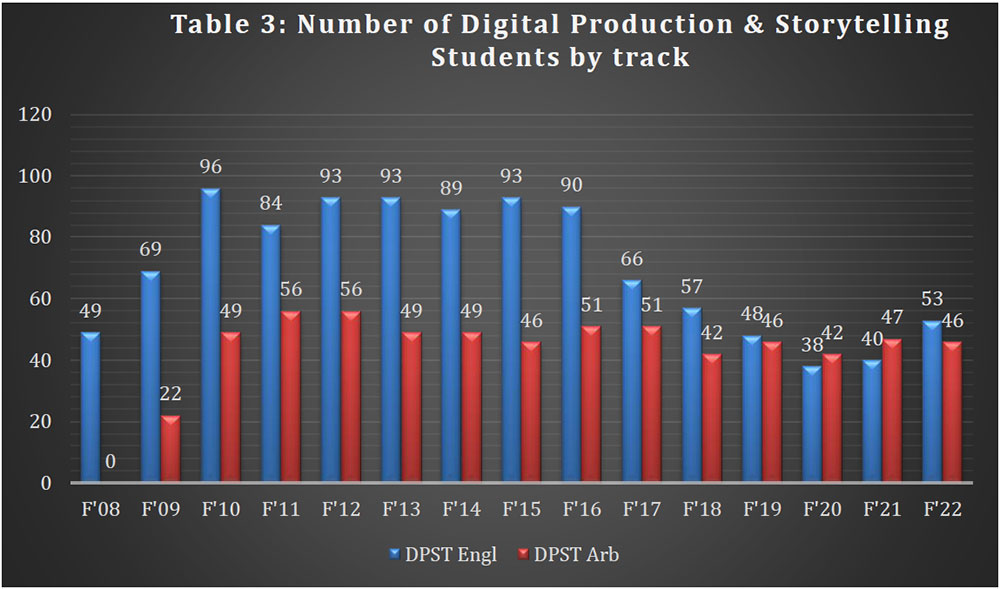
Over the past six years, the number of students enrolled in the Arabic track used to be higher than the ones in the English track. However, this has changed and we see a higher number of JOUR students in the English track. (see Table 4).
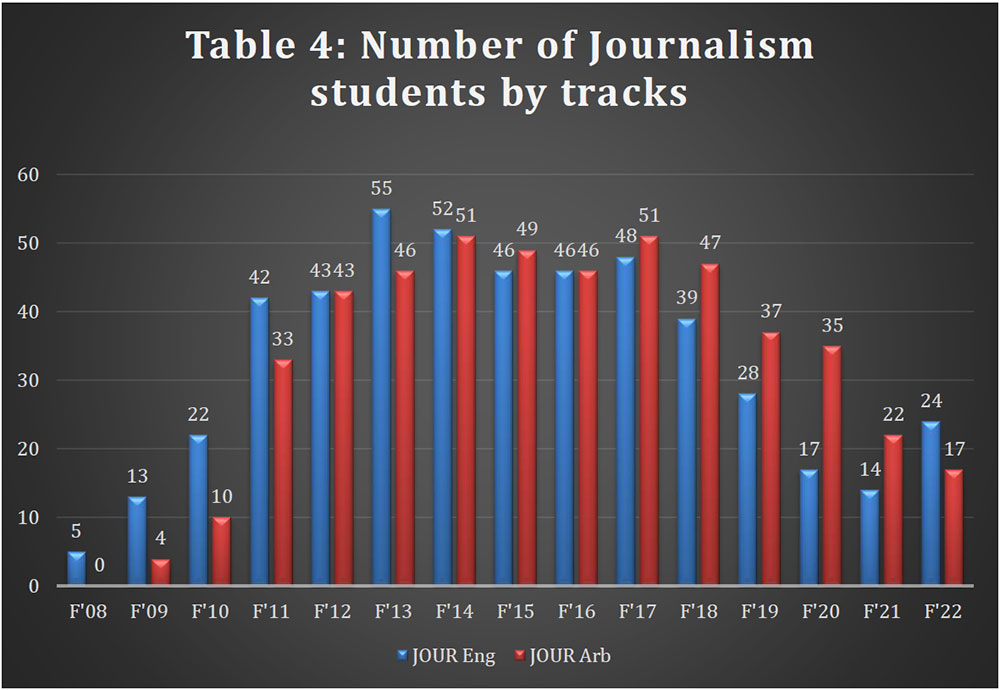
The Retention Rates in Table 5 reflect the proportion of the MBRSC students who stayed in the program a year after they enrolled. The Retention Rate of students who joined in fall 2020 and are still in the program in fall 2021 is 92%. The Attrition Rate is the proportion of the MBRSC students who are no longer in the program a year after they initially joined. There has been significant improvement in the past years in the retention rates as more than 90% of the students returned in Fall 2021.
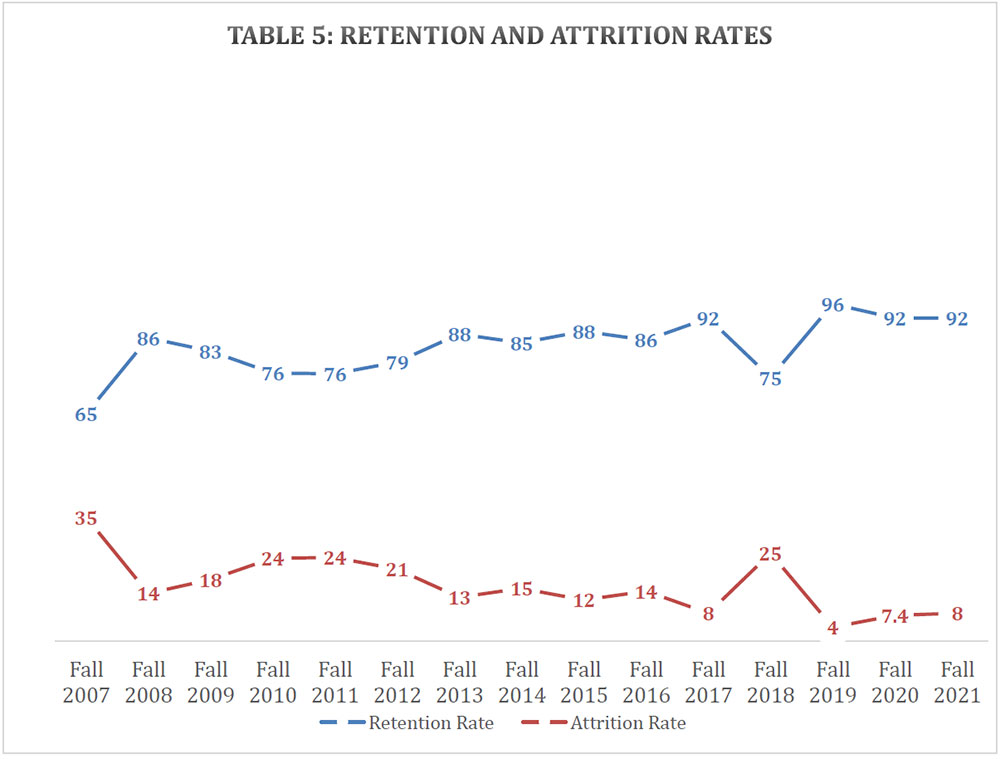
The Graduation Rates presented in Table 6 are computed for students who joined in fall 2008 onward. These Graduation Rates represent the proportion of students who completed their degree requirements, after four years and six years from the time they joined the program.
The completion rates of the cohorts that joined in 2018 and 2019 are at 75% and 55% respectively.
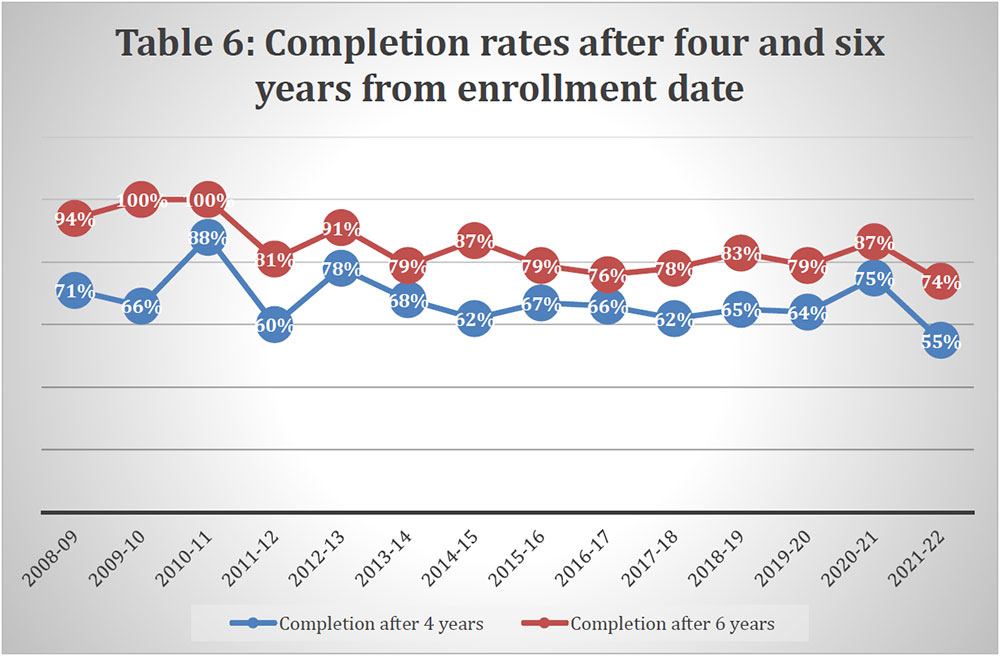
The employment rates noted in Table 7 are based on the last survey conducted in the Fall of 2022 including all 462 BCIS alumni who graduated from the MBRSC since its launch in 2007 until July 2022. Excluded from Table 7 though are the 22May 2022 graduates since many of them were unlikely to have found employment at the time the survey was conducted. The employment rates calculated below exclude the 91 undergraduate alumni as well that we were unable to contact. As for the remaining pool of 271 BCIS alumni from May 2011 to May 2022, the overwhelming majority, 90.28%, were working full time, and only 6.14% were not working at the time of the survey.
Table 7: Employment rates including all BCIS graduates that completed their degree requirements and were contacted successfully*
